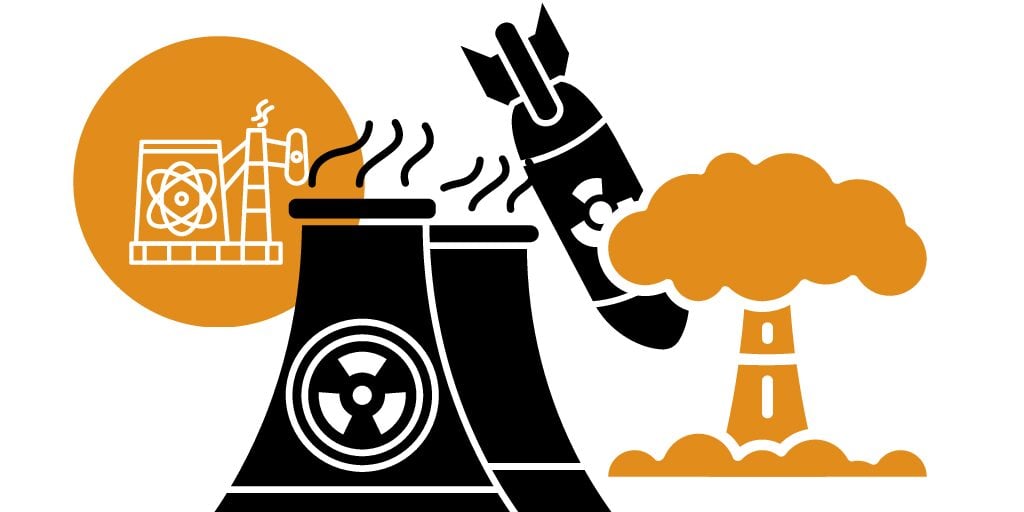“So long as anyone has nuclear weapons, others will want them. So long as anyone possesses nuclear weapons, they are bound, one day, to be used, by accident or miscalculation if not by deliberate design. And any such use would be catastrophic for our world as we know it.”
Carl Rolf Ekéus, Swedish diplomat, representative to the Conference on Disarmament in Geneva
Total elimination of nuclear weapons is surely the goal of peace-loving people around the world but the decades-long efforts of the non-nuclear states have had limited success in persuading nuclear states to disarm.
US, Russia, the UK, France, China, India, Pakistan, the North Korea and Israel possess ~13,080 nuclear weapons of mass destruction, of which 9,576 were potentially operationally available. An estimated 3,844 of these were deployed with operational forces, 2,000 of them on high operational alert. The US has 4,477 and Russia 3,708 – 90% of the total number.
US spent ~$US43.7 billion on nuclear weapons in 2022. Globally, spending on nuclear weapons increased by $US82.9 billion.
What should be done to reduce the risk:
As a close ally of the US, Australia should at least be pressing for:
- A universal commitment to No First Use
- A drastic reduction in weapons ready for immediate use
- Reducing the overall global stockpile to less than 2,000 weapons
- Taking weapons off high-alert and launch-on warning readiness
(Recommendations of Gareth Evans, former Foreign Minister, initiator of the Canberra Commission on the Elimination of Nuclear weapons)
The threat:
“We are drifting into one of the most dangerous periods in human history,” Dan Smith, director of the Stockholm International Peace Research Institute
The regions most likely to draw the US into conflict are the Korean Peninsula, Taiwan Strait, Eastern Europe and the Persian Gulf. North Korea is developing intercontinental ballistic missiles that can reach the US.
Russia has suspended its New START Agreement, revoked the Comprehensive Test Ban Treaty and threatened to use nuclear weapons in its invasion of Ukraine.
China is in the middle of a significant modernisation and a doubling of its nuclear arsenal. Its nuclear stockpile is expected to continue growing over the coming decade and some projections suggest that it will deploy at least as many intercontinental ballistic missiles as either Russia or the USA in that period.
India and Pakistan appear to be increasing the size of their nuclear weapon inventories, and the UK has announced plans to increase its stockpile. North Korea’s military nuclear programme remains central to its national security strategy and it may have assembled up to 30 nuclear weapons and could produce more. North Korea conducted more than 90 ballistic missile tests during 2022—the highest number it has ever undertaken in a single year. Israel continues to maintain its long-standing policy of nuclear ambiguity, leaving significant uncertainty about the number and characteristics of its nuclear weapons.
The UN says the risk of nuclear weapons use is higher now than at any time since the cold war.
Nuclear weapons
Nuclear weapons numbers have come down from highs of over 60,000, primarily due to the US and Russia dismantling retired warheads. However both have extensive and expensive programs underway to replace and modernise their nuclear warheads, and their missile, aircraft and submarine delivery systems. Today’s nuclear weapons are more advanced in design, technology, and destructive power. They are more precise and ten or more times more powerful than the early atomic bombs.
They are also smaller, allowing integration into various delivery systems. Many have multiple warheads and some are designed for close targets like battlefields. This means they are at high risk of escalation from potential misinterpretation, miscalculation, or an unintended response from adversaries, all of which could lead to full-scale nuclear war.
See here for Australia’s longstanding position on nuclear weapons.
References:

